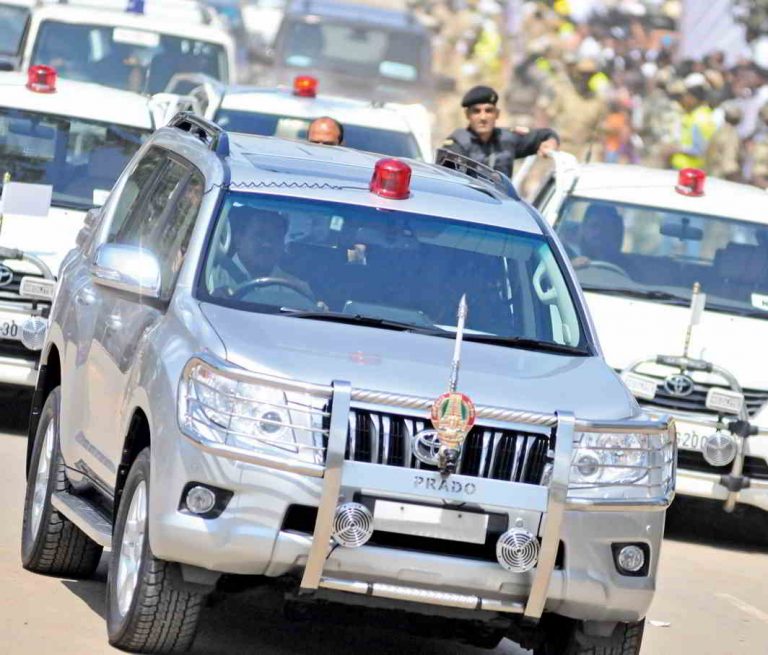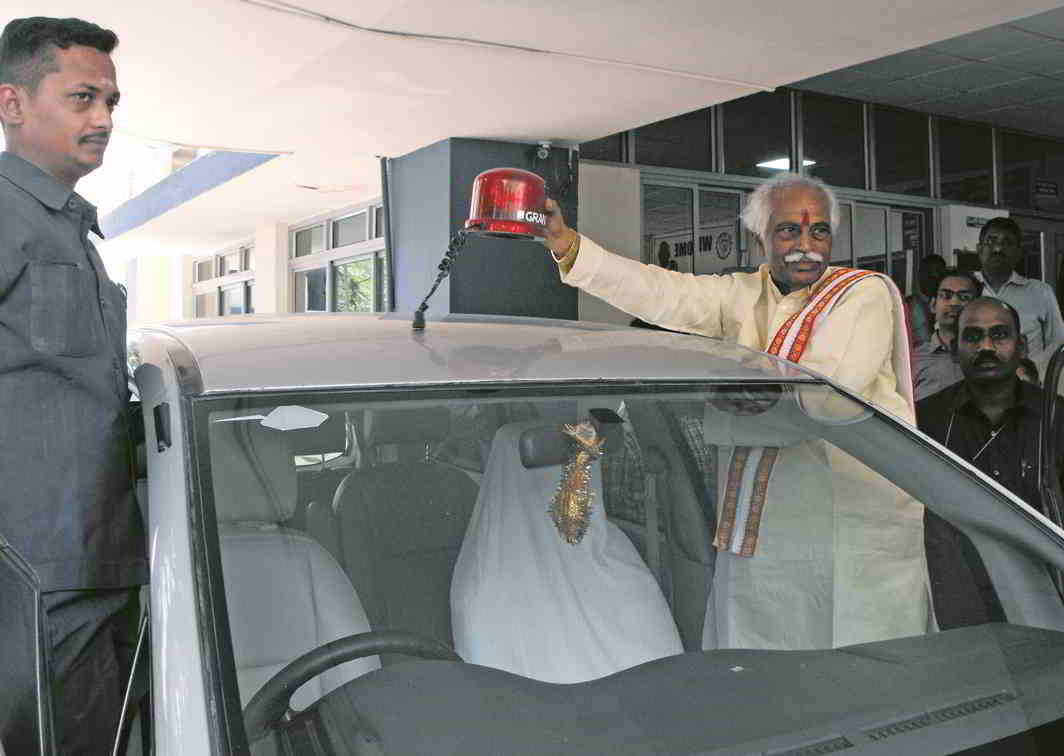
Though the ban on these lights from May 1 will not bring an end to the culture of privilege among VIPs in India, it could check the misuse of these vehicles for committing crimes
~By Venkatasubramanian
The ban imposed by the Union cabinet on April 19 on the use of red beacons on all vehicles from May 1 is, at best, a symbolic gesture. How did the government suddenly realize that this symbolised VIP culture? It would be naive to consider this gesture as a sincere attempt on the part of the government to ensure that power and privilege are not openly displayed as it is not likely to lead to any dent in the privileges enjoyed by our VVIPs.
Cynicism apart, the reasoning behind this step was partly endorsed in 2013 by the Supreme Court bench comprising Justices GS Singhvi and C Nagappan in the case of Abhay Singh v State of Uttar Pradesh and Others.
The apex court had then agreed that red beacons symbolise power and starkly differentiated between those who were allowed to use it and those who weren’t. But this is not the reason why the Court wanted it banned selectively.
A large number of those using vehicles with red lights have no respect for the laws of the country and treat ordinary citizens with contempt, it reasoned. The use of red beacons on the vehicles of public representatives and civil servants has perhaps no parallel in the world’s democracies, the Court added.
After examining the relevant provisions of the Motor Vehicles Act, the bench was initially inclined to agree with the Amicus Curiae, Harish Salve, that the use of signs and symbols of authority such as red lights are contrary to the constitutional ethos and the basic feature of republicanism. But on deeper consideration, the bench accepted the submissions of the then government that the term “high dignitaries” used in proviso to Rule 108(1) of the 1989 Motor Vehicle Rules would take within its fold various constitutional functionaries, that is, holders of constitutional offices.

The bench found merit in the argument that when the framers of the constitution considered it appropriate to treat those occupying constitutional positions as a special category, there was no reason for the Court to exclude them from the ambit of the term “high dignitaries”. The bench also agreed with the view that the use of red lights on vehicles carrying the holders of constitutional posts would in no manner compromise with the dignity of other citizens and individuals or embolden them to think that they were superior to other people. This was more so because this distinction would be available to them only while on duty and would be co-terminus with their tenure.
Yet, the Court approved of the partial ban because of the misuse of red lights on the vehicles carrying large number of persons other than “high dignitaries”. The governments of most states and Union Territories, the Court suggested, used the power of issuing notifications to enlarge the list of persons entitled to use red lights with or without flashers, whether on duty or otherwise.
The Court also noted that there was an abysmal failure on the part of the concerned authorities and agencies of various state governments and UTs to check misuse of these vehicles. As a result, they were used for committing crimes, while police officials were scared of checking them (in the belief that influential VVIPs might be travelling in them), let alone imposing a fine or penalty on them and their occupants. Therefore, the Court directed that in such cases, vehicles carrying “high dignitaries” specified by the central government and state governments might be fitted with red lights but these could be used only while the dignitary was on duty and not otherwise.
The Court further limited the power of states and UTs from enlarging the scope of the term “high dignitaries” beyond what was already there in government notifications. Thus, there were 12 categories of high dignitaries who could have a red beacon with a flasher on their vehicles, starting from the president to include the vice-president, prime minister and judges of the Supreme Court. A separate list of 15 high dignitaries who could use a red beacon without a flasher was also drawn up.
Clause iii of the Proviso to sub-rule (1) of Rule 108 of the Central Motor Vehicles Rules, 1989, gave exemption to vehicles carrying high dignitaries as specified by the central government or the state government, from time to time, from the ban on use of red beacons. Sub-rule (2) permitted use of blue light with flasher, if the same is determined and notified by the state governments at their discretion. Sub-rule (3) permitted use of blue light with or without flasher as a top light on vehicles escorting high dignitaries who were entitled to use of red light. Sub-rule (5) required state governments to inform the centre regarding notifications permitting use of red light on top of vehicles used by dignitaries. Sub-rule (6) required that red or blue light of vehicles not carrying dignitaries should not be used, but covered by black cover. All these clauses were omitted through the April 20 amendment, notified by the Union Ministry of Road Transport and Highways.
Shining beacons
According to a central government notification of 2002, amended in 2005, 12 categories of “high dignitaries” can use the red beacons with a flasher:
- President
- Vice-President
- Prime-Minister
- Former Presidents
- Deputy PM
- Chief Justice of India
- Speaker of Lok Sabha
- Cabinet ministers of the Union
- Deputy Chairman of the Planning Commission
- Former Prime Ministers
- Leader of Opposition in Rajya Sabha and Lok Sabha
- Judges of the Supreme Court
Fifteen other categories were allowed to use red beacons but without a flasher
Earlier, the use of red, blue and white lights was permitted only on vehicles specifically designated for emergency duties and only if such use was specified by state governments under sub-rule (4). The April 20 notification of the Ministry amended this provision to include disaster management, along with the emergency duties, and transferred the power to specify such use from the state governments to the centre. This is perhaps not well thought-out because the state governments during emergencies and disasters must have the power to specify such use. Ceding this power exclusively to the centre would mean abdication of responsibilities by state governments during calamities.
This is because the Supreme Court in January 2015 accepted the Delhi Police’s plea and modified its 2013 order to permit the use of red lights by operational agencies which require unhindered access to roads for the performance of their duties, namely, ambulance services, fire services, emergency maintenance, etc. The Court accepted the contention of the Delhi Police that red light has maximum penetration even in low-visibility conditions such as fog, dust and at night, whereas blue light has the minimum wavelength and least penetration.
The 2013 Supreme Court judgment also recommended imposition of enhanced penalties to deter misuse of red beacons on vehicles. At present, the fines laid down under Section 177 of the Motor Vehicles Act, 1988, range from just Rs 100 to Rs 300. The April 20 notification is silent on enhanced penalties and is therefore, a disappointment.

